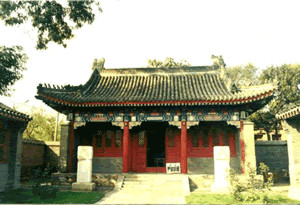Gongshuizi Temple

Gongshuizi Temple
Gongshuizi Temple, also known as Luban Temple, is located on the east side of Gulou North Street in Jizhou district. The existing buildings of the temple include the front gate built in the Qing Dynasty, the main hall, and the east and west side halls. Luban Temple is famous for its exquisite workmanship, building materials, and extraordinary painting. The temple was rebuilt in the third year of the Guangxu reign in the Qing Dynasty (1877) using the same wood as was used in the Dingdong Mausoleum (Cixi Mausoleum). According to word-of-mouth information, the wood materials were left over from the construction of Cixi Mausoleum. Based on the actual situation at that time, it is conceivable for the following reasons.
First, the wood was produced in South China and was expensive. It was almost impossible to use the wood if there was no royal project.
Second, most of the wood used for the construction of the Eastern Royal Tombs of the Qing Dynasty was transported to the Caizhuang Wharf in the south of Jizhou district, where it was processed and then transported to the Eastern Royal Tombs, where it could be more conveniently used in the Luban Temple.
Third, the construction industry in Jizhou was very developed at that time. A lot of skilled craftsmen in Jixian county built mausoleums for the royal family.
Fourth, the time of rebuilding Luban Temple is in line with the time when the Dingdong Mausoleum was built.
Covering an area of around 866.67 square meters, Luban Temple has a typical residential layout with reasonable spatial scale and coordinated courtyards. The temple is in the typical official style of the Qing Dynasty, and it is now a cultural relics protection unit in Tianjin.

Copyright ©
Tianjin Municipal Government. All rights reserved. Presented by China Daily.
京ICP备13028878号-35



